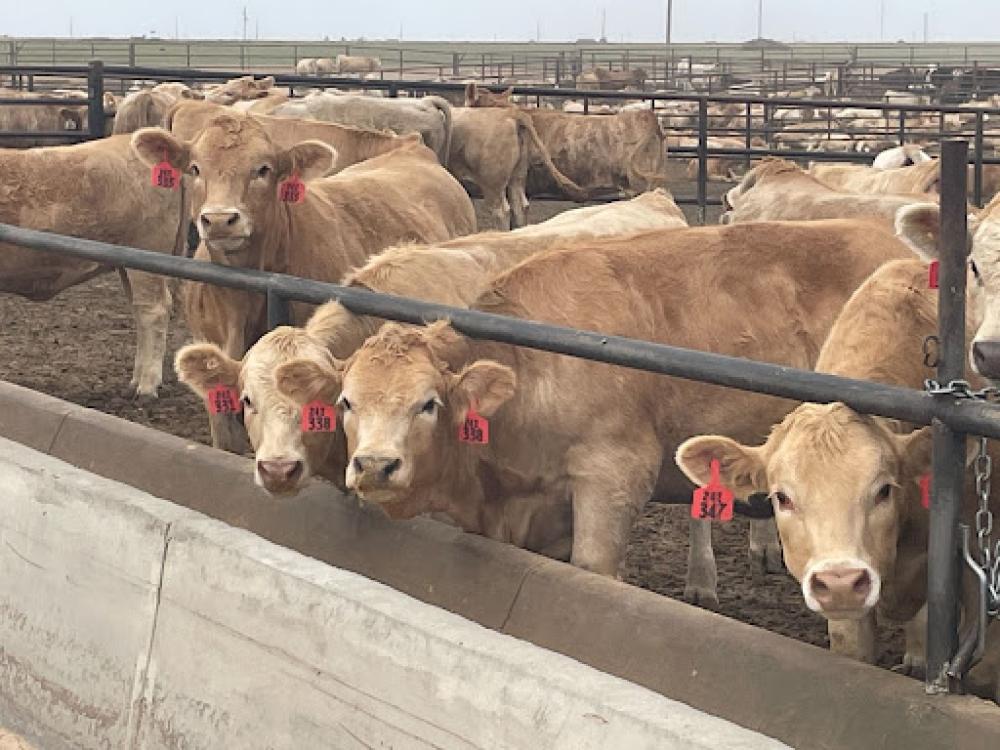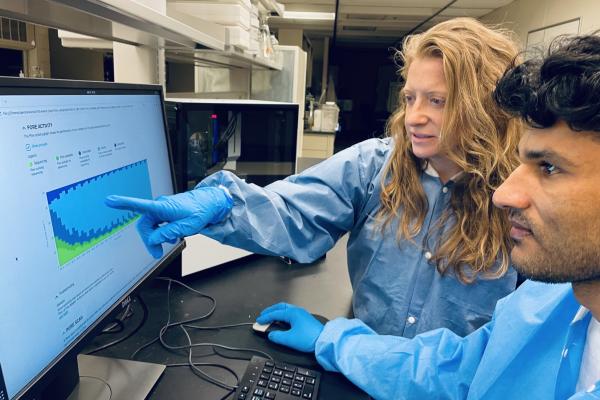US–UK collaboration including University of Minnesota receives $3.5M to study viral transmission during group ‘commingling events’
November 2, 2023

Photo courtesy Paul Morley
MINNEAPOLIS/ST. PAUL (11/2/23) — Researchers from the University of Minnesota College of Veterinary Medicine along with collaborating institutions in the US and UK received $3.5 million in funding from the United States Department of Agriculture National Institute of Food and Agriculture (USDA-NIFA), the National Science Foundation, and the Biotechnology and Biological Sciences Research Council (BBSRC) to study the transmission of viruses during “commingling events”—when unfamiliar animals or people come together in a defined space and time with intensive and sustained contact.
The researchers, led by Dr. Noelle Noyes, Associate Professor in the College of Veterinary Medicine at the University of Minnesota, will work with partners from Texas A&M University, Mississippi State University, and the University of Liverpool, to untangle these dynamics. To understand why some people and animals get infected and sick with viruses during commingling events (while others do not), the researchers will use cattle and a cattle-type coronavirus to track how the virus transmits between cattle that are being commingled. They will measure the cattle's immune systems and the microbes that inhabit their body to understand if differences have an impact on whether cattle get infected and sick.
Commingling is associated with increased disease transmission risk—with possible global consequences, as the COVID-19 pandemic has highlighted. Commingling events in humans include mass-gathering events, back-to-school, air travel, incarceration, and mass migration. Among animals, commingling routinely occurs during certain stages of livestock production. Commingling events are very complex, with multiple stressors. These stressors can alter the body's ability to fight disease, at the same time that the body is being exposed to more pathogens. As the world experiences an inexorable trend towards increasingly frequent, intensive, large-scale commingling events among humans and animals, there is an urgent need to understand virus dynamics specifically during these commingling events.
Using metagenomic and immunological data along with advanced modeling techniques, they will uncover organizing principles of infectious disease transmission during commingling. Their findings will have immediate ramifications for livestock husbandry practices and will advance theoretical understanding of virus behavior for future research.
"We hope to uncover the complex multi-level mechanisms that underlie viral transmission during intensive mixing of unfamiliar calves,” says Dr. Joe Neary, principal investigator of the project’s UK activities. “These new insights will better inform calf husbandry practices to reduce infectious disease transmission risk, particularly where newly mixed calves have been sourced from multiple farms."
The study will also expand fundamental scientific understanding of viral behavior. As lead investigator Noyes describes, “A unique aspect of this work is the integration of microbiome dynamics into models of virus transmission at the population level. There’s a lot of scientific evidence about the importance of the microbiome in individual health, but we don’t have as much understanding of how population-level microbiome dynamics may influence pathogen transmission, particularly during situations of heightened disease risk, such as commingling.”
About the College of Veterinary Medicine
The University of Minnesota College of Veterinary Medicine affects the lives of animals and people every day through educational, research, service, and outreach programs. Established in 1947, the University of Minnesota College of Veterinary Medicine is Minnesota’s only veterinary college. Fully accredited, the college has graduated over 4,000 veterinarians and hundreds of scientists. The college is also home to the Veterinary Medical Center, the Veterinary Diagnostic Laboratory, the Leatherdale Equine Center and The Raptor Center. Learn more at vetmed.umn.edu.


